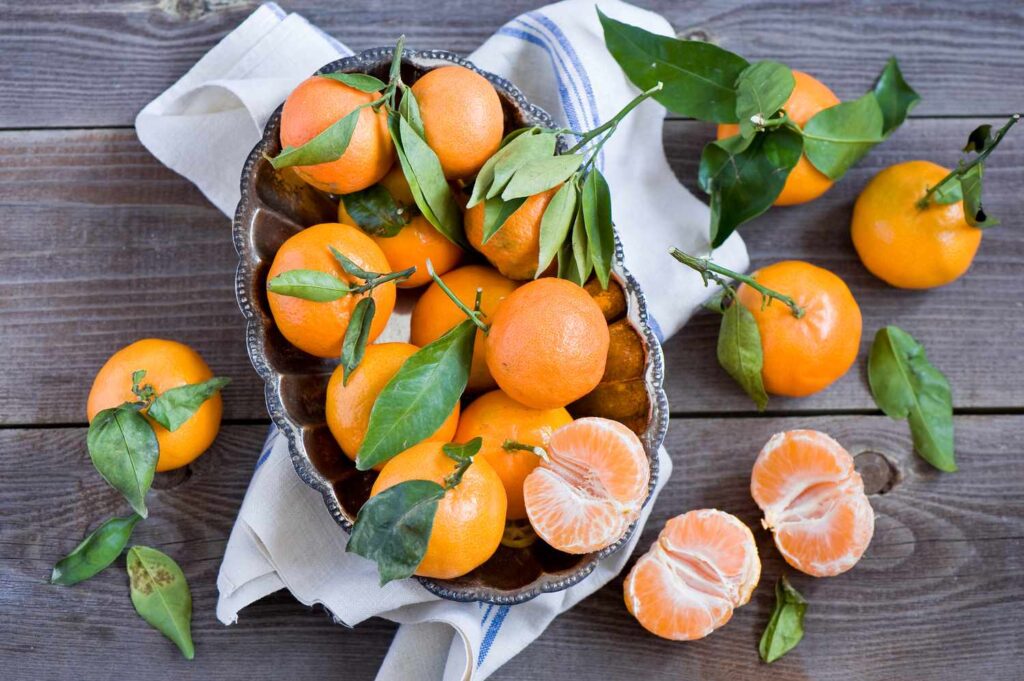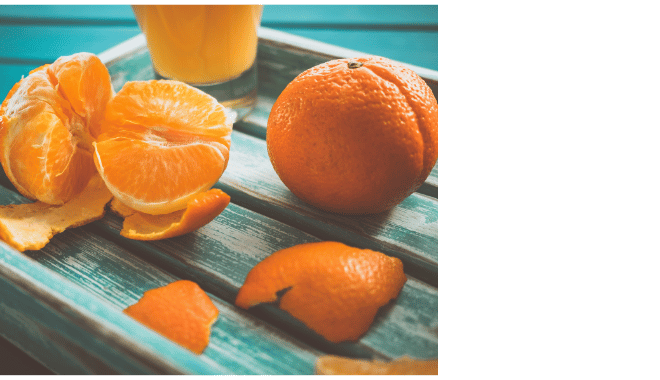Remember that specific sound? It’s not loud. It’s a quiet, crisp tear as your thumbnail first breaks the peel of a cold orange. It’s immediately followed by that unmistakable scent—a microscopic puff of citrus oil that feels like a tiny, personal firework of pure sunshine going off right under your nose.

For me, that whole sensory experience is a time machine. One whiff and I’m a kid again, sitting on the damp grass during a halftime soccer break, my mom handing me a plastic baggie with perfectly separated orange wedges. It’s the smell of Saturday morning cartoons, the one healthy snack in my school lunchbox that I never, ever traded away. It’s simple, clean, and inextricably linked to that iconic blue sticker: Sunkist.
But let’s be honest, we’re living in a different world now. Our modern wellness culture has trained us to be detectives, to scrutinize every label and question every ingredient. And at the top of the Public Enemy No. 1 list is a single, five-letter word: SUGAR.
It’s the ghost that haunts the grocery aisles, the villain in every food documentary, the shadowy figure lurking in our sodas, candies, and breakfast cereals. We’ve become a generation of sugar-skeptics, and for good reason. The evidence against overconsumption of added sugar is overwhelming.
So, it’s completely natural that our suspicion eventually turns to nature’s original candy. That beautiful, vibrant Sunkist orange sitting innocently on your kitchen counter… is it a guilt-free health hero, or is it a Trojan horse, smuggling a payload of sugar into your healthy diet? When you bite into a ridiculously juicy segment and that wave of pure sweetness hits your tongue, you can almost hear a little voice in your head whispering, “This tastes too good. What’s the catch?”
Today, we are going to dive so deep into that question that you’ll come out the other side as an undisputed orange expert. We’re going to put orange sugar on trial, but we’re going to give it a fair one. We’ll look at the numbers, yes, but more importantly, we’re going to look at the story, the science (the simple way!), and the powerful context that surrounds every single gram. Spoiler alert: You’re going to feel absolutely fantastic about peeling that next orange.
Part 1: Understanding Our Complicated Relationship with Sweetness
Before we can fairly judge the orange, we have to understand our own programming. Why do we even like sweet things?
It turns out, our love for sugar isn’t a modern character flaw; it’s an ancient survival instinct. For our early ancestors, sweetness was nature’s universal signal for “Safe to Eat” and “Contains Energy.” In a world of scarce resources, finding a sweet fruit was like hitting the jackpot. It meant calories for fuel, water for hydration, and a payload of vitamins to keep them healthy. A bitter taste, on the other hand, was often a warning sign for poison. So, for thousands of years, our brains evolved a powerful reward circuit: Sweet = Good. Survive. Thrive.
The problem is, our ancient brains are now living in a modern food environment that has been hijacked. Food scientists have isolated that sweet signal and learned to pump it, in its most concentrated and addictive form, into everything. The real villain isn’t sweetness itself; it’s the industrial-scale abuse of it.
When we talk about the bad guy, we’re talking about added sugars. These are the sugars ripped from their natural context. They are the high-fructose corn syrup, the sucrose, the dextrose that are shoehorned into products where they don’t belong. They are nutritional mercenaries, offering nothing but empty calories. They show up to the party without any of the beneficial friends that come along in whole foods—no fiber, no vitamins, no minerals, no antioxidants. They just spike your blood sugar, mess with your metabolism, and contribute to a whole list of health problems we all want to avoid.
The sugar in a Sunkist orange, however, is still living in its natural, ancestral home. It’s not a lone wolf; it’s the leader of a well-behaved, highly functional pack. And that changes everything.
Part 2: The Orange on Trial – A Deep Dive into the Numbers
Okay, let’s get granular. You came here for answers, and the most basic question is “how much?”
A typical, medium-sized Sunkist Navel orange contains, on average, about 12 grams of natural sugar.
Now, let’s put that number on a stage and bring out some other characters for comparison:
- A 12-ounce can of Pepsi: 41 grams of added sugar.
- A regular-sized bag of Skittles: 46 grams of added sugar.
- A single serving of many “healthy” breakfast cereals: 15-20 grams of added sugar.
- A Venti Iced White Chocolate Mocha from Starbucks: 64 grams of added sugar.
Looking at that lineup, the 12 grams in your orange seems incredibly modest. It’s a fraction of what’s in common processed foods. But what about other fruits?
- A medium banana: ~14 grams of sugar.
- A cup of green grapes: ~15 grams of sugar.
- A cup of sliced strawberries: ~7 grams of sugar.
- A cup of cubed mango: ~23 grams of sugar.
As you can see, oranges sit comfortably in the lower-middle range of the fruit world. They are far from being the “high-sugar” fruit that some people fear.
The Glycemic Index: The “Speed” of Sugar
But here’s a more advanced concept that truly vindicates the orange: the Glycemic Index (GI). The GI is a scale from 0 to 100 that measures how quickly a food containing carbohydrates raises your blood sugar levels. Pure glucose is the benchmark at 100.
- High-GI foods (70+) are like a drag racer. They dump sugar into your bloodstream at lightning speed, causing a dramatic spike and a subsequent crash. Think white bread, pretzels, and sugary drinks.
- Low-GI foods (55 or less) are like a steady city bus. They release sugar slowly and gradually, providing stable, long-lasting energy.
So, where does a whole Sunkist orange land on this scale? It has a Glycemic Index of about 40-45. That places it firmly in the low-GI category. White bread, by comparison, has a GI of around 75. A baked potato can be 85 or higher.
This low score is direct, scientific proof of what we’ve been talking about. The complete package of the orange—especially its fiber—acts as a natural braking system, ensuring that its sugars are absorbed in a gentle, controlled manner.
Part 3: The Ultimate Defense – Nature’s Perfect Delivery System
The low GI score is the what, but the why is where the real beauty lies. The sugar in an orange is buffered by an incredible team of nutrients that work in perfect synergy.
1. The Fiber Factor: Your Body’s Best Friend
We’ve called it a brake pedal, and that’s the perfect analogy. The average orange contains about 3 grams of dietary fiber, a significant chunk of your daily needs. This fiber, particularly soluble fibers like pectin, forms a gel-like mesh in your digestive system. This mesh physically slows down the rate at which sugar can pass through your intestinal wall and into your bloodstream.
This is the absolute key. It’s the difference between a gentle wave of energy and a tidal wave that overwhelms your system. This fiber also provides a feast for the trillions of beneficial bacteria living in your gut. A happy gut microbiome is increasingly linked to better immunity, improved mood, and lower inflammation. Oh, and it makes you feel full, which is a powerful tool for preventing overeating.
2. The Water Works: Nature’s Hydration Engine
An orange is about 87% water. This incredible water content contributes to hydration, which is vital for every single bodily function. It also adds significant volume and weight to the fruit without adding calories. This is critical for satiety—that feeling of fullness and satisfaction.
Think about it. It’s a genuine challenge to eat three whole oranges back-to-back. Your stomach would be physically full of water and fiber. But you could drink a 16-ounce soda containing the sugar equivalent of four oranges in two minutes and still feel like you have room for more, because you’re getting none of that volume.
3. The Micronutrient Army: An Antioxidant Powerhouse
Those 12 grams of sugar are delivered alongside a veritable army of vitamins, minerals, and powerful plant compounds that are doing amazing things for your health.
- Vitamin C (Ascorbic Acid): Oranges are the poster child for Vitamin C, and for good reason. A single medium orange can provide nearly 100% of your daily needs. This isn’t just for fending off colds. Vitamin C is a potent antioxidant that protects your cells from damage, is essential for building collagen (for healthy skin, joints, and gums), and even helps your body manage the stress hormone cortisol.
- Flavonoids (Hesperidin & Naringenin): Let’s get a little geeky. Oranges are packed with compounds called flavonoids. The most famous one in oranges is hesperidin. Studies suggest that hesperidin is a superstar for cardiovascular health. It helps improve blood flow, may lower blood pressure, and has powerful anti-inflammatory properties. Most of the hesperidin is found in the white, pithy part of the orange and the membranes between the segments—the very parts that get thrown out when you make juice!
- Carotenoids (Beta-carotene): These are the pigments that give oranges their vibrant color. Your body converts beta-carotene into Vitamin A, which is crucial for healthy vision, a robust immune system, and cell growth. Like other phytonutrients, they are powerful antioxidants, protecting your body on a cellular level.
When you weigh the modest 12 grams of sugar against this incredible list of benefits, the scales tip overwhelmingly in the orange’s favor. It’s a nutritional bargain of the highest order.
Part 4: The Great Debate – Whole Fruit, Juice, and Smoothies
“But what about orange juice? It’s just squeezed oranges!” This is one of the biggest points of confusion.
As we touched on, juicing is a process of separation. It masterfully extracts the sugar and water but discards the most valuable player: the fiber. An 8-ounce glass of OJ contains the sugar of 3-4 oranges, delivered in a flash without the fibrous braking system. Its effect on your blood sugar is dramatically different and much more aggressive than that of a whole orange.
Even if the label says “100% Pure,” “Not from Concentrate,” or “Cold-Pressed,” the fundamental problem remains: the fiber is gone. While cold-pressing might preserve a few more heat-sensitive vitamins, it doesn’t solve the sugar-rush issue.
This is where the smoothie comes in as a superior alternative. When you make a smoothie, you blend the entire fruit—flesh, pulp, and all. You are consuming the whole package, just in a different form. The fiber is still present, ready to do its job of slowing sugar absorption and filling you up. A smoothie made with one orange, some spinach, and a source of protein like Greek yogurt is a balanced, fiber-rich meal. A glass of orange juice is, nutritionally speaking, a sugar-delivery system.
The hierarchy is clear:
- Best: The whole Sunkist orange.
- Good: A smoothie made with the whole orange.
- Use Sparingly: A small glass of 100% pure orange juice.
Part 5: Oranges in Your Life – More Than Just a Snack
Let’s move beyond the theoretical and into how this amazing fruit can actively improve your life.
- For the Athlete: An orange is one of nature’s perfect performance foods. The natural sugars provide quickly accessible fuel for a pre-workout energy boost. Post-workout, it helps replenish depleted glycogen stores, the potassium helps ward off muscle cramps, and the massive dose of Vitamin C aids in repairing muscle tissue and reducing exercise-induced oxidative stress. Plus, it’s intensely hydrating!
- For Weight Management: In a world that tells you to cut carbs to lose weight, the orange stands as a proud exception. The combination of fiber and water creates a high level of satiety, meaning it makes you feel full and satisfied for very few calories. Choosing an orange over a processed snack can save you hundreds of calories and keep you feeling fuller for longer, making it a powerful ally in your weight management journey.
- For a Happy Mind: Don’t underestimate the psychological benefits! The act of peeling an orange can be a moment of mindfulness—a small, tactile ritual in a busy day. Furthermore, the essential oils released from the peel have been used in aromatherapy for centuries to reduce anxiety and uplift mood. And on a biochemical level, Vitamin C has been shown to help lower levels of the stress hormone cortisol, making you more resilient to daily pressures.
Conclusion: Embrace the Orange, Ditch the Fear
So, let’s bring the trial of the Sunkist orange to a close. Is it loaded with sugar? In the grand scheme of our modern diet, the answer is a resounding no. The 12 grams of sugar it contains are a modest amount, delivered in one of the most intelligently designed, health-promoting packages on the planet.
Let’s bust the myths once and for all:
- MYTH: The sugar in oranges is just as bad as the sugar in candy.
- FACT: The sugar in oranges is bundled with fiber, water, vitamins, and antioxidants, which completely changes how your body processes it, leading to a slow, stable energy release.
- MYTH: You should avoid oranges if you are watching your sugar intake.
- FACT: Unless you are on a strict, medically supervised ketogenic diet, oranges are one of the best sweet snacks you can have, thanks to their low Glycemic Index and high satiety factor.
- MYTH: Orange juice is a healthy, everyday drink.
- FACT: Orange juice is a concentrated source of sugar that lacks the beneficial fiber of the whole fruit. It should be consumed in moderation, while the whole fruit should be embraced daily.
Worry about the sugar that’s hiding in your bread, your sauces, your dressings, and your so-called “health” bars. Be a detective in the packaged food aisles. But please, grant a full pardon to the humble orange.
The next time you hold a Sunkist orange in your hand, feel its weight, see its vibrant color, and anticipate that burst of freshness. Know that you’re not holding a sugar bomb. You’re holding a perfectly crafted piece of natural engineering, designed to nourish, hydrate, and delight you. You’re holding one of nature’s greatest gifts. Peel away the fear, and enjoy every single juicy bite.

